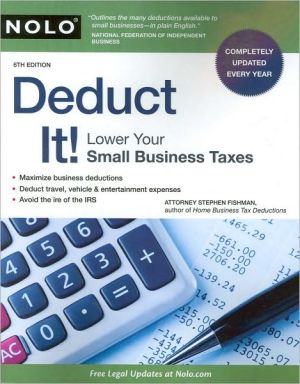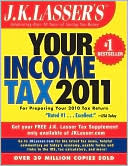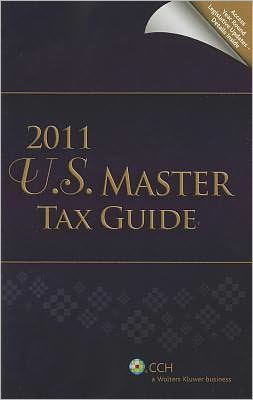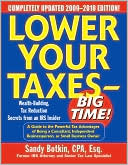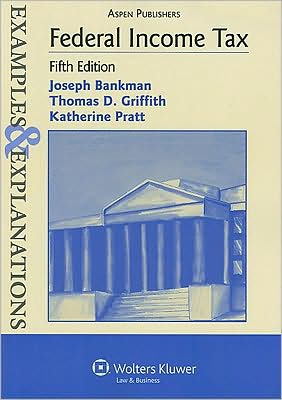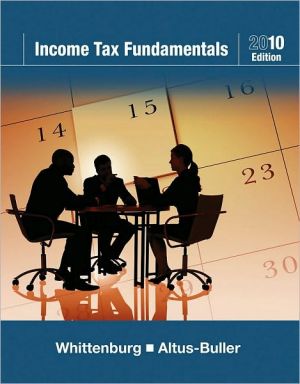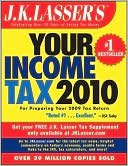Deduct It!: Lower Your Small Business Taxes
About the Author\ Stephen Fishman received his law degree from the University of Southern California in 1979. After stints in government and private practice, he became a full-time legal writer in 1983. He has helped write and edit over a dozen reference books for attorneys. He is the author of Software Development: A Legal Guide, Copyright Your Software, The Copyright Handbook, Consultant & Independent Contractor Agreements, Wage Slave No More: Law & Taxes for the Self-Employed, and...
Search in google:
The fastest way for any small business to make more money is to pay less to the IRS. Recent changes in the tax law make this easier to do than ever before - yet many entrepreneurs continue to pay more than is necessary. Let Deduct It! show you how to maximize the business deductions you re entitled to quickly, easily and legally. Comprehensive yet easy to read with many interesting and relevant examples the book is organized into practical, easy-to-use categories featuring common deductions, including: *start-up expenses *operating expenses *health deductions *vehicles *entertainment *meals *travel *home offices *inventory *equipment *and many more Deduct It! is indispensable to your venture, whether you re just starting out or have been established for years. The book also provides basic information on how different business structures are taxed and how tax deductions work. Accounting Today Delves deeply into the complex thicket of available deductions, with real-life examples on deducting everything from start-up expenses to car and travel expenses and the costs of benefits.
Introduction\ The tax code is full of deductions for businesses -- from automobile expenses to wages for employees. Before you can start taking advantage of these deductions, however, you need a basic understanding of how businesses pay taxes and how tax deductions work. This chapter gives you all \ the information you need to get started. It covers:\ \ \ \ \ how tax deductions work\ how businesses are taxed\ how to calculate the value of a tax deduction, and\ what businesses can deduct.\ \ \ \ How Tax Deductions Work\ A tax deduction (also called a tax write-off) is an amount of money you are entitled to subtract from your gross income (all the money you make) to determine your taxable income (the amount on which you must pay tax). The more deductions you have, the lower your taxable income will be and the less tax you will have to pay.\ \ Types of Tax Deductions\ \ There are three basic types of tax deductions: personal deductions, investment deductions, and business deductions. This book covers only business deductions -- the large array of write-offs available to business owners.\ \ Personal Deductions\ \ For the most part, your personal, living, and family expenses are not tax deductible. For example, you can't deduct the food that you buy for yourself and your family. There are, however, special categories of personal expenses that may be deducted, subject to strict limitations. These include items such as home mortgage interest, state and local taxes, charitable contributions, medical expenses above a threshold amount, interest on education loans, and alimony. This book does not \ coverthese personal deductions.\ \ Investment Deductions\ \ Many people try to make money by investing money. For example, they might invest in real estate or play the stock market. These people incur all kinds of expenses, such as fees paid to money managers or financial planners, legal and accounting fees, and interest on money borrowed to buy investment property. These and other investment expenses (also called expenses for the production of income) are tax deductible, subject to certain limitations. Investment deductions are not covered in this book.\ \ Business Deductions\ \ People in business usually must spend money on their business -- for office space, supplies, and equipment. Most business expenses are deductible, sooner or later, one way or another. And that's what this book is about: the many deductions available only to people who are in business (sole proprietors, independent contractors, and small business owners).\ \ You Only Pay Taxes on Your Business Profits\ \ The federal income tax law recognizes that you must spend money to make money. Virtually every business, however small, incurs some expenses. Even someone with a low overhead business (such as a freelance writer) must buy paper, computer equipment, and office supplies. Some businesses incur substantial expenses, even exceeding their income.\ \ You are not legally required to pay tax on every dollar your business takes in (your gross business income). Instead, you owe tax only on the amount left over after your business's deductible expenses are subtracted from your gross income (this remaining amount is called your net profit). \ Although some tax deduction calculations can get a bit complicated, the basic math is simple: The more deductions you take, the lower your net profit will be, and the less tax you will have to pay.\ \ Example: Karen, a sole proprietor, earned $50,000 this year from her consulting business. Fortunately, she doesn't have to pay income tax on the entire $50,000 -- her gross income. Instead, she can deduct from her gross income various business expenses, including a $5,000 home office deduction (see Chapter 7) and a $5,000 deduction for equipment expenses (see Chapter 5). She deducts \ these expenses from her $50,000 gross income to arrive at her net profit: $40,000. She pays income tax only on this net profit amount.\ \ You Must Have a Legal Basis for Your Deductions\ \ All tax deductions are a matter of legislative grace, which means that you can take a deduction only if it is specifically allowed by one or more provisions of the tax law. You usually do not have to indicate on your tax return which tax law provision gives you the right to take a particular deduction. If you are audited by the IRS, however, you'll have to provide a legal basis for every deduction you take. If the IRS concludes that your deduction wasn't justified, it will deny the deduction and charge you back taxes and, in some cases, penalties.\ \ You Must Be in Business to Claim Business Deductions\ \ Only businesses can claim business tax deductions. This probably seems like a simple concept, but it can get tricky. Even though you mightbelieve you are running a business, the IRS may beg to differ. If your small-scale business doesn't turn a profit for several years in a row, the IRS might \ decide that you are engaged in a hobby rather than a business. This may not sound like a big deal, but it could have disastrous tax consequences: People engaged in hobbies are entitled to very limited tax deductions, while businesses can deduct all kinds of expenses. Fortunately, this unhappy outcome can be avoided by careful taxpayers. (See Chapter 2 for a detailed discussion on how to beat the hobby loss rule.)How Businesses Are Taxed\ If your business earns money (as you undoubtedly hope it will), you will have to pay taxes on those profits. How you pay those taxes will depend on how you have structured your business. So, before getting further into the details of tax deductions, it's important to understand what type of business you have formed (a sole proprietorship, partnership, limited liability company, or corporation) and how you will pay tax on your business's profit.\ \ This section briefly summarizes some fairly complex areas of law. Although it covers the basic tax consequences of each business form, it does not explain how to choose the best structure for your business. If you need to decide how to organize a new business or want to know whether you should change your current business form, you can refer to LLC or Corporation? How to Choose the Right Form for Your Business, by Anthony Mancuso (Nolo), or Choose the Best Legal Structure for Your One-Person Business, by Stephen Fishman (available on Nolo's website at www.\ olo.com, under eProducts).\ \ Basic Business Forms\ \ Every business, from a part-time operation you run from home while in your jammies to a Fortune 500 multinational company housed in a gleaming skyscraper, has a legal structure. If you're running a business right now, it has a legal form even if you made no conscious decision about how it should be legally organized.\ \ The four basic legal structures for a business are sole proprietorship, partnership, limited liability corporation, and corporation. For tax purposes, corporations are either S corporations (corporations that have elected pass-through tax treatment) or C corporations (also called regular\ corporations). Every business falls into one of these categories -- and your category will determine how your business's profits will be taxed.\ \ Sole Proprietorship\ \ A sole proprietorship is a one-owner business. You can't be a sole proprietor if two or more people own the business (unless you own the business with your spouse). Unlike the other business forms, a sole proprietorship has no legal existence separate from the business owner. It cannot sue or be sued, own property in its own name, or file its own tax returns. The business owner (proprietor) personally owns all of the assets of the business and controls its operation. If you're running a one-person business and you haven't incorporated or formed a limited liability company, you are a sole proprietor.\ \ Partnership\ \ A partnership is a form of shared ownership and management of a business. The partners contribute money, property, or services to the partnership; in return, they receive a share of the profits it earns, if any. The partners jointly manage the partnership business. A partnership automatically\ comes into existence whenever two or more people enter into business together to earn a profit and don't incorporate or form a limited liability company. Although many partners enter into written\ partnership agreements, no written agreement is required to form a partnership.\ \ Corporation\ \ Unlike a sole proprietorship or partnership, a corporation cannot simply spring into existence -- it can only be created by filing incorporation documents with your state government. A corporation is a legal entity distinct from its owners. It can hold title to property, sue and be sued, have bank accounts, borrow money, hire employees, and perform other business functions.\ \ For tax purposes, there are two types of corporations: S corporations (also called small business corporations) and C corporations (also called regular corporations). The most important difference between the two types of corporations is how they are taxed. An S corporation pays no taxes itself -- instead, its income or loss is passed on to its owners, who must pay personal income taxes on their share of the corporation's profits. A C corporation is a separate taxpaying entity that pays taxes on\ its profits. (See "Tax Treatment," below.)\ \ Limited Liability Company\ \ The limited liability company, or LLC, is the newest type of business form in the United States. An LLC is like a sole proprietorship or partnership in that its owners (called members) jointly own and manage the business and share in the profits. However, an LLC is also like a corporation,\ because its owners must file papers with the state to create the LLC, it exists as a separate legal entity, and the LLC structure gives owners some protection from liability for business debts.\ \ Tax Treatment\ \ Your business's legal form will determine how it is treated for tax purposes. There are two different ways that business entities can be taxed: The business itself can be taxed as a separate entity, or the business's profits and losses can be "passed through" to the owners, who include the profits or losses on their individual tax returns.\ \ Pass-Through Entities: Sole Proprietorships, Partnerships, LLCs, and S Corporations\ \ Sole proprietorships and S corporations are always pass-through entities. LLCs and partnerships are almost always pass-through entities as well -- partnerships and multiowner LLCs are automatically taxed as partnerships when they are created. One-owner LLCs are automatically taxed like sole proprietorships. However, LLC and partnership owners have the option of choosing to have their entity taxed as a C corporation or S corporation by filing an election with the IRS. This is rarely done.\ \ A pass-through entity does not pay any taxes itself. Instead, the business's profits or losses are passed through to its owners, who include them on their own personal tax returns (IRS Form 1040). If a profit is passed through to the owner, that money is added to any other income the owner has and the owner pays taxes on the total amount. If a loss is passed through, the owner can generally use it to offset income from other sources -- for example, salary from a job, interest, investment income,\ or a spouse's income (as long as the couple files a joint tax return). The owner can subtract the business loss from this other income, which leaves a lower total subject to tax.\ \ Example: Lisa is a sole proprietor who works part time as a personal trainer. During her first year in business, she incurs $10,000 in expenses and earns $5,000, giving her a $5,000 loss from her business. She reports this loss on IRS Schedule C, which she files with her personal income tax return (Form 1040). Because Lisa is a sole proprietor, she can deduct this $5,000 loss from any\ income she has, including her $100,000 annual salary from her engineering job. This saves her about $2,000 in total taxes for the year.\ \ Although pass-through entities don't pay taxes, their income and expenses must still be reported to the IRS as follows:\ \ \ \ \ \ Sole proprietors must file IRS Schedule C, Profit or Loss From Business, with their tax returns. This form lists all the proprietor's business income and deductible expenses.\ Partnerships are required to file an annual tax form (Form 1065, U.S. Return Partnership of Income) with the IRS. Form 1065 is not used to pay taxes. Instead, it is an "information return" that informs the IRS of the partnership's income, deductions, profits, losses, and tax credits for the year. Form 1065 also includes a separate part called Schedule K-1 in which the partnership lists each partner's share of the items listed on Form 1065. A separate Schedule K-1 must be provided to each partner. The partners report on their individual tax returns (Form 1040) their share of the partnership's net profit or loss as shown on Schedule K-1. Ordinary business income or loss is reported on Schedule E, Supplemental Income or Loss. However, certain items must be reported on other Schedules -- for example, capital gains and losses must be reported on Schedule D and charitable contributions on Schedule A.\ S corporations report their income and deductions much like a partnership. An S corporation files an information return (Form 1120S) reporting the corporation's income, deductions, profits, losses, and tax credits for the year. Like partners, shareholders must be provided a Schedule K-1 listing their share of the items listed in the corporation's Form 1120S. The shareholders file Schedule E with their personal tax returns (Form 1040) showing their share of corporation income or losses.\ LLCs with only one member are treated like a sole proprietorship for tax purposes. The member reports profits, losses, and deductions on Schedule C -- just like a sole proprietor. An LLC\ with two or more members is treated like a partnership for tax purposes unless the members elect to be taxed like a C corporation (which is rare).\ \ \ \ Regular C Corporations\ \ A regular C corporation is the only business form that is not a pass-through entity. Instead, a C corporation is taxed separately from its owners. C corporations must pay income taxes on their net income and file their own tax returns with the IRS, using Form 1120 or Form 1120-A. They also have their own income tax rates (which are lower than individual rates at some income levels).\ \ When you form a C corporation, you have to take charge of two separate taxpayers: your corporation and yourself. Your C corporation must pay tax on all of its income. You pay personal income tax on C \ corporation income only when it is distributed to you in the form of salary, bonuses, or dividends.\ \ C corporations can take all the same business tax deductions that pass-through entities take. In addition, because a C corporation is a separate tax-paying entity, it may provide its employees with tax-free fringe benefits, then deduct the entire cost of the benefits from the corporation's income as a business expense. No other form of business entity can do this. (Although they are corporations, S corporations cannot deduct the cost of benefits provided to shareholders who hold more than 2% of the corporate stock.)\
Introduction1. Tax Deduction Basics2. Beating the Hobby Loss Rule3. Start-Up Expenses4. Business Operating Expenses5. Deducting Long-Term Assets6. Inventory7. The Home Office Deduction8. Car and Local Travel Expenses9. Business Travel10. Meal and Entertainment Expenses11. Hiring Workers12. Retirement Deductions13. Medical Expenses14. Additional Deductions15. Record Keeping and Accounting16. Help Beyond This Book
\ Reference & Research Book NewsOffers basic information and examples in plain English on how businesses are taxed and how to maximize deductions that the IRS considers legitimate.\ \ \ \ \ San Francisco ChronicleFor more information on how to handle inventory and write off the cost of goods, see Deduct It! Lower Your Small Business Taxes.\ \ \ Accounting TodayDelves deeply into the complex thicket of available deductions, with real-life examples on deducting everything from start-up expenses to car and travel expenses and the costs of benefits.\ \ \ \ \ National Federation of Independent BusinessOutlines the many deductions available to small businesses -- in plain English.\ \ \ \ \ San Francisco Chronicle"For more information on how to handle inventory and write off the cost of goods, see Deduct It! Lower Your Small Business Taxes."\ \ \ \ \ Accounting TodayDelves deeply into the complex thicket of available deductions, with real-life examples on deducting everything from start-up expenses to car and travel expenses and the costs of benefits.\ \ \ \ \ National Federation of Independent BusinessOutlines the many deductions available to small businesses -- in plain English.\ \
